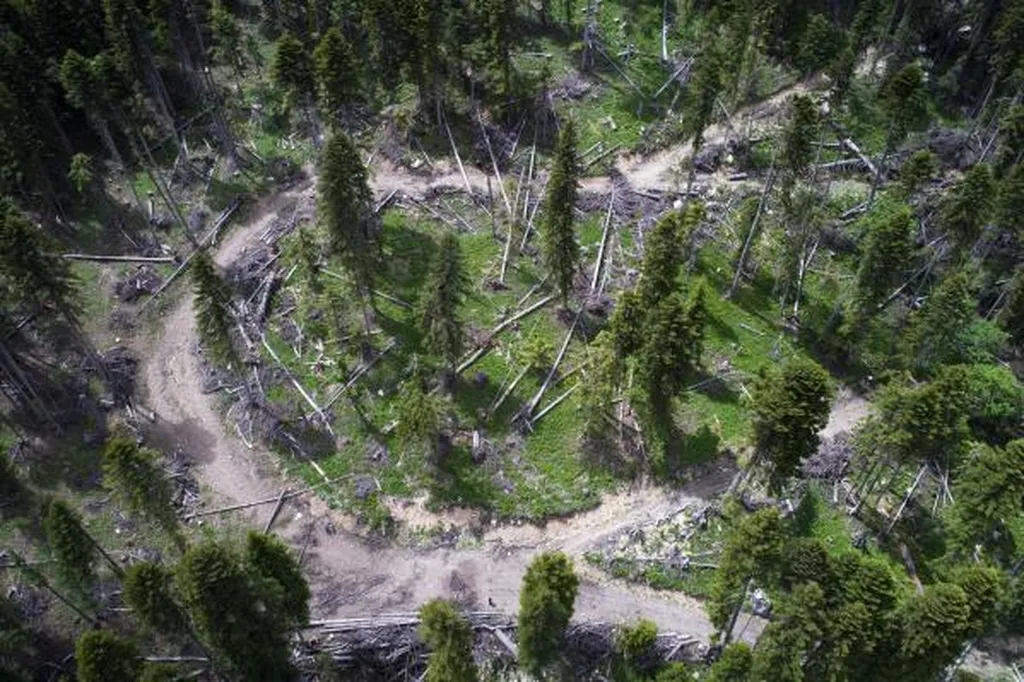In the heart of Russia’s Saratov region, a groundbreaking study is reshaping our understanding of forest biogeocenoses and their potential impacts on the energy sector. Led by Anton V. Kosarev from Saratov State University of Genetics, Biotechnology and Engineering named after N.I. Vavilov, the research leverages artificial intelligence and remote sensing data to characterize woody vegetation, offering insights that could influence sustainable energy practices.
The study, published in ‘Геосистемы переходных зон’ (translated to English as ‘Geosystems of Transition Zones’), focuses on the “Bely Klyuch” natural landmark. By analyzing multichannel satellite images in the visible and near-infrared spectral ranges, Kosarev and his team have uncovered a multilevel structure within the forest biogeocenosis. “We found that 60–65% of woody areas belong to the high forest, and 30–35% to the medium forest,” Kosarev explains. This distribution indicates a predominance of high forest, which plays a crucial role in the ecosystem’s structure and functioning.
The research employs advanced spectral transformations and principal component analyses to identify key characteristics of the forest biogeocenosis. One notable finding is the indistinctness of the soil line in greenness vs. brightness coordinates, suggesting a sustainable development of the deciduous forest. “The soil is hidden under a layer of foliage, fallen leaves, and moss,” Kosarev notes. “Therefore, the reflected signal from the soil mixes with the reflection from the vegetation, creating a unique signature that we can analyze.”
For the energy sector, these findings hold significant implications. Understanding the structure and health of forest biogeocenoses can aid in the development of sustainable bioenergy projects. Forests act as carbon sinks, absorbing CO2 from the atmosphere, which is crucial for mitigating climate change. By identifying areas with high forest density, energy companies can strategically plan bioenergy projects that maximize carbon sequestration and minimize environmental impact.
Moreover, the study’s use of artificial intelligence and remote sensing data offers a scalable and efficient method for monitoring forest health. This technology can be deployed globally, providing real-time data to inform energy policies and practices. “Our approach allows for a comprehensive and dynamic assessment of forest biogeocenoses,” Kosarev states. “This can support the energy sector in making informed decisions that balance economic growth with environmental sustainability.”
The research also highlights the importance of tall trees in creating shade and influencing microclimate conditions. These factors can affect the growth of lower vegetation layers, which in turn impacts the overall biodiversity and health of the ecosystem. For the energy sector, this means that preserving high forest areas can contribute to a more resilient and diverse ecosystem, supporting a wider range of bioenergy sources.
As the world shifts towards renewable energy, the need for sustainable and efficient bioenergy solutions becomes increasingly urgent. Kosarev’s research provides a valuable tool for achieving this goal. By harnessing the power of artificial intelligence and remote sensing, the energy sector can make significant strides in developing sustainable bioenergy projects that benefit both the environment and the economy.
In the broader context, this study paves the way for future research in forest biogeocenosis characterization. The methods and findings can be applied to various ecosystems, offering insights into their structure, functioning, and potential impacts on the energy sector. As technology continues to advance, the integration of artificial intelligence and remote sensing data will play a pivotal role in shaping the future of sustainable energy.

